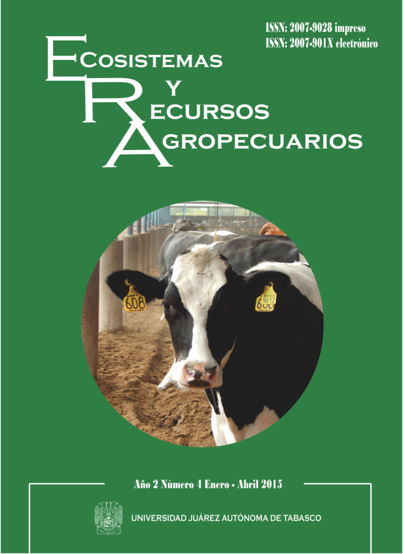16 HOURS PHOTOPERIOD IN HOLSTEIN HEIFERS IN THE SUBTROPICS: EFFECTS IN DEVELOPMENT AND AGE TO FIRST ESTRUS
DOI:
https://doi.org/10.19136/era.a2n4.717Keywords:
Photoperiod, development, heifers calvez, estrus, subtropical,Abstract
Both growth and milk production in heifer calves are stimulated by a long photoperiod, though this has not been proven yet in subtropical areas. To evaluate the effect of 16 hr of light (L16) on calves suckling (LAC) and/or pre-pubertal stages (PP) in a subtropical area, 325 calves (36 ± 0.4 kg) were randomized into two groups: L16 or natural photoperiod (LNAT). At seven months of age, 198 of these calves (195 ± 2 kg) were randomly assigned to L16 or LNAT. The following were determined at the beginning and end of LAC and PP stages: Weight (PC, kg), height (AC, cm), thickness of back-fat (GG, cm) and of Longissimus dorsi (LD, cm); pelvic area (AP, cm2), body condition (CC), age at first estrus, mammary gland depth (PGM, cm) and width (AGM, cm). The statistical analysis was made using ANOVA for a 2 X 2 factorial arrangement. At the end of LAC, GG was lower and LD greater in L16 animals, while, at the end of PP, L16 heifer calves had a greater PC (260 ± 3 vs 250 ± 3), AP (166 ± 1.2 vs 153 ± 1.2), LD (3.18 ± 0.04 vs 2.90 ± 0.04), and AGM (2.41 ± 0.02 vs 2.21 ± 0.02), but a lower GG (0.114 ± 0.003 vs 0.139 ± 0.003) as compared to LNAT heifer calves. More L16 animals (67 %) presented estrus versus LNAT (38 %)Downloads
Downloads
Published
Issue
Section
License
Aviso de copyright
Los autores que se envían a esta revista aceptan los siguientes términos:
una. Los autores conservan los derechos de autor y garantizan a la revista el derecho a ser la primera publicación del trabajo con una licencia de atribución de Creative Commons que permite a otros compartir el trabajo con un reconocimiento de la autoría del trabajo y la publicación inicial en esta revista.
B. Los autores pueden establecer acuerdos complementarios separados para la distribución no exclusiva de la versión del trabajo publicado en la revista (por ejemplo, en un repositorio institucional o publicarlo en un libro), con un reconocimiento de su publicación inicial en esta revista.
C. Se permite y se anima a los autores a difundir su trabajo electrónicamente (por ejemplo, en repositorios institucionales o en su propio sitio web) antes y durante el proceso de envío, ya que puede conducir a intercambios productivos, así como a una cita más temprana y más extensa del trabajo publicado. (Consulte El efecto del acceso abierto).

